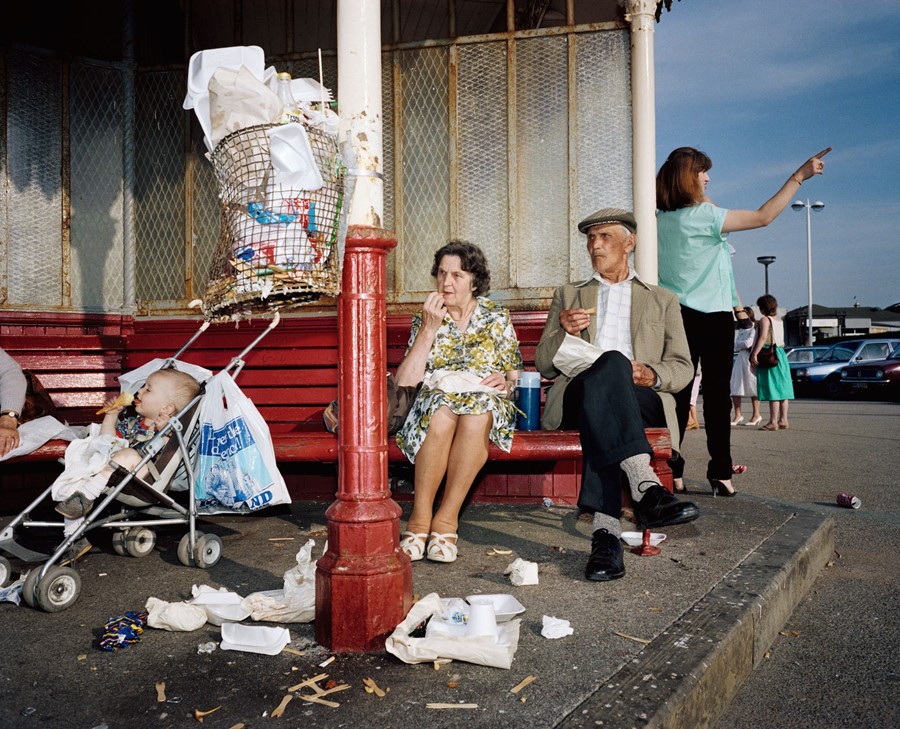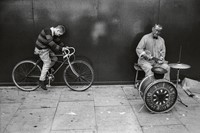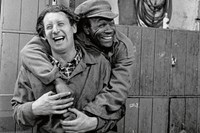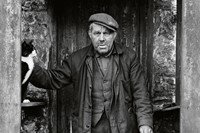Featuring works by photographers including Thurston Hopkins and Sunil Gupta, Gerry Badger’s new book Another Country documents seven decades of British life
At the back of a large townhouse in Highgate, north London, a young, lavishly dressed couple recline on a plush sofa that has been relocated to the garden. One of them swills a wine glass, while the other looks on adoringly. It is a summer evening and the collection of empty glasses on the floor and fading light suggests a length of revelry.
The photographer that captured this moment was Thurston Hopkins and the event was a “coming out” ball for debutante Anna Massey in 1955. The mode of dress, the black and white film, the outdated occasion all hark back to a Britain that has slipped into the history books and the nostalgic hearts of those old enough to remember. It is a snapshot of another Britain – another country to the one we recognise today – or, perhaps, another moment in time with its perfect lighting and expressions savoured in film forever.
Another Country is therefore the very fitting title for the book Thurston Hopkins’ photograph appears in – along with over 250 others that span the last 70 years, documenting the Britain that was and is and the artists and documentarians who have responded to it. In the book, Haywood Magee’s sensitive shots of the Caribbean community arriving in the UK rub shoulders with Joseph McKeown’s street scenes in Edinburgh, while Siân Davey’s jumble of teenagers lounging under a tree contrasts with more formal portraits by Neeta Madahar, Jason Wilde and Alice Mann.
Curated by photographer, writer and critic Gerry Badger, the book seeks to find Britain through photography, rather than attaching images to a previously established narrative. This approach makes space for voices from every corner of society and Badger invites James Barnor to detail the African diaspora’s experiences in London in the 1960s, Sunil Gupta to reveal the realities of the gay community in the 1970s, 80s and 90s and Sarah Davidmann to narrate the lives of queer, transgender and non-binary individuals in the early 00s.
Photographers both inside and outside communities have important insights to make. “There is this big argument in photography that you can only make authentic photographs if you are part of a community” says Badger. “I know why people say that – and by and large it is true – but there is also a matter of talent and insight. Anyone with talent and insight can make authentic photographs and bring something to the table. It’s about intelligence and complexity and being open and all kinds of things.”
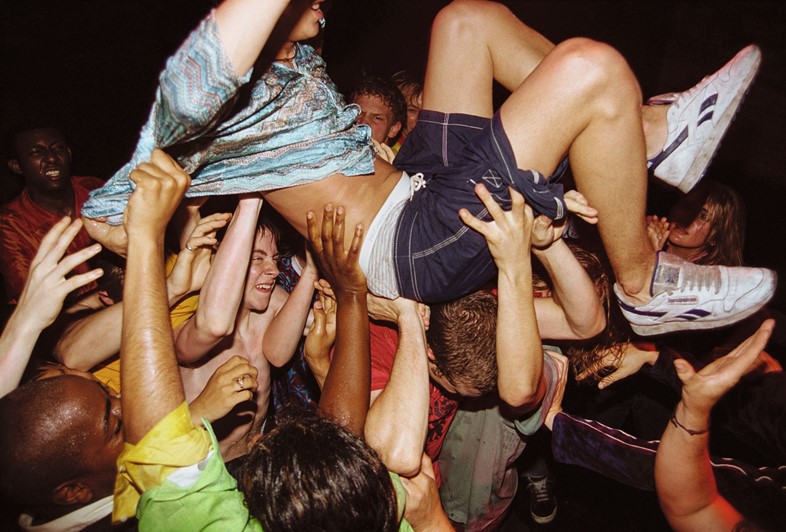
Having worked within the photography industry for around 50 years, Badger has a strong affection for the work of Tony Ray-Jones, Martin Parr, Chris Killip and Grace Robertson, but his favourite image in the book is immensely personal. “At the beginning of the 1970s, the first wave of feminists staged a series of demonstrations against the Miss World competition at the Albert Hall and there’s a wonderful photograph – it was just taken by an agency photographer – of women protesting. There is someone in that picture who is holding up a sign saying ‘women are people too’ and that is my late partner.”
On paper, that photograph is of “another” time, but it is its personal relevance that imbues it with additional power. “Photography is very specific,” explains Badger. “I think its specificity is one of its greatest strengths. Specificity and time are what photography does best – and what photography does best unlike any other medium.”
Another Country: British Documentary Photography Since 1945 by Gerry Badger is published by Thames & Hudson in collaboration with the Martin Parr Foundation, and is available from 19 May 2022.
